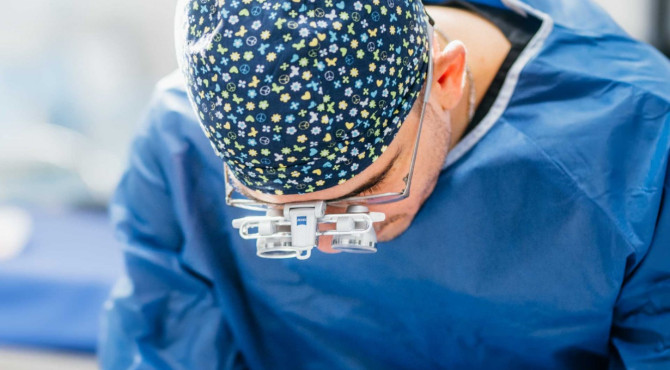About Kidney Transplant

Step 1: Referral
For patients suffering from renal failure on dialysis or with kidney function less than 10%, a kidney transplant can be a transforming gift. It’s an opportunity to return to a fulfilling life of restored health and productivity. Patients can be referred as soon as kidney function is less than 25 percent. Once you or your representative speaks with a team member to obtain initial health and insurance information, you will be registered for our orientation class.
Step 2: Transplant Education Meeting
All patients seen at our center must attend this class. will become familiar with the transplantation process, contraindications, and types of kidneys available, waiting times for deceased or living donors, and complications associated with a kidney transplant. It is usually provided once a month and is led by transplant coordinators. You will be given the opportunity to attend the meeting with your family members and to ask questions.
Step 3: Transplant Evaluation
After completing Step 2, you will be scheduled to begin your transplant evaluation. When you come to the Presbyterian Transplant Center, you will meet with a transplant coordinator, nephrologist, surgeon, financial coordinator, and social worker. You will undergo many tests and may have to see other specialists. You are encouraged to bring your family to all of your appointments. The process of evaluation can last between two to six months. Your role as a recipient is crucial in getting the all the work-up done as fast as possible, so your case can be presented to the multidisciplinary meeting for listing. You are encouraged to contact the transplant coordinator immediately after you complete a specific test (for example, contact the coordinator when you have completed dental, procedures, mammogram, etc.). Remember, time is precious! The sooner you get on the list,the sooner you may start receiving offers.
Step 4: Multidisciplinary Meeting
After you have completed the required testing, your information will be presented to the Transplant Selection Committee for approval. The committee includes all members of the transplant team. They analyze your information and give their opinion. Sometimes a patient may be asked to complete additional work-up, so their information may need to be presented several times before getting approved.
Step 5: Listing
Once the multidisciplinary committee has approved you, your name patients are will be included in the national UNOS list or you will be listed as ready to receive an organ from a living kidney donor. Due to the critical shortage of deceased donors, most adults wait on the UNOS list for many years before being transplanted. Your wait time depends on the availability of organs, how long you have been on the list, your blood type, your tissue type, and your level of preexisting anti-HLA antibodies. If you have a living donor available and approved, then the operation can proceed without waiting. You will starting accumulating points in the national list from the moment you began dialysis or if you were approved by the multidisciplinary committee when your GFR was less than 20% .
Step 6: Transplantation
For deceased donor recipients: When an offer is available and UNOS identifies a potential recipient from our center, you will be called and informed about the offer and asked to come to Presbyterian Hospital in Albuquerque.
You will be examined again by the nephrologist and surgeon and labs will be checked to make sure you are okay for the transplantation and that you and the donor have matching tissue.
For living donor recipients: Because there is a donor available, a set time is defined for the operation.
You will come to the transplant clinic for examination by the nephrologist and surgeon about one week before the operation to make sure all the risks are evaluated and addressed. Because time between Step 5 and 6 can vary from weeks to years, sometimes patients on Step 6 can be potentially advised not to undergo transplantation, especially when risks outweighs benefits.
The kidney transplant surgery is performed under general anesthesia. The operation usually takes 2-–4 hours. The kidney transplant is placed in the front (anterior) part of the lower abdomen, in the pelvis. Next, the artery that carries blood to the kidney and the vein that carries blood away is surgically connected to the artery and vein already existing in your pelvis. The ureter, or tube, that carries urine from the kidney, is connected to the bladder. Recovery in the hospital is usually 3–7 days.
Complications can occur with any surgery. The following complications do not occur often, but can include:bleeding, infection, and difficulty with blood circulation to the kidney, wound healing problems or problems with the flow of urine from the kidney. The original kidneys are not usually removed unless they are causing severe problems, such as uncontrollable high blood pressure, frequent kidney infections, or are greatly enlarged.
Step 7: Post Transplant Clinic Follow-Up
After the kidney transplant operation, you will be followed by the transplant clinic staff regularly, 1–2 times a week, for several weeks, and then less frequent appointments will be scheduled. You’ll have labs often, especially in the first three months, and are encouraged to be proactive about your care and to contact the team if any complication arises. Our transplant providers usually prescribe most of the medications you will need, and they recommend contacting the transplant team members if any medication is added or changed because medication interactions between common medications, such as antibiotics and blood pressure medications, and transplant medication can be very dangerous.





